February 2021

February 2021
Seeing Korea’s nightlife is an astounding moment for every first-timer to the nation. Experiencing it? You will be grateful for its unending hours of food stalls offering a varied assortment of food. Simply put, it is heaven for those in need of a late-night bite.
![]()
Written by
Todd Sample,
CEO and Co-founder
of Eathentic
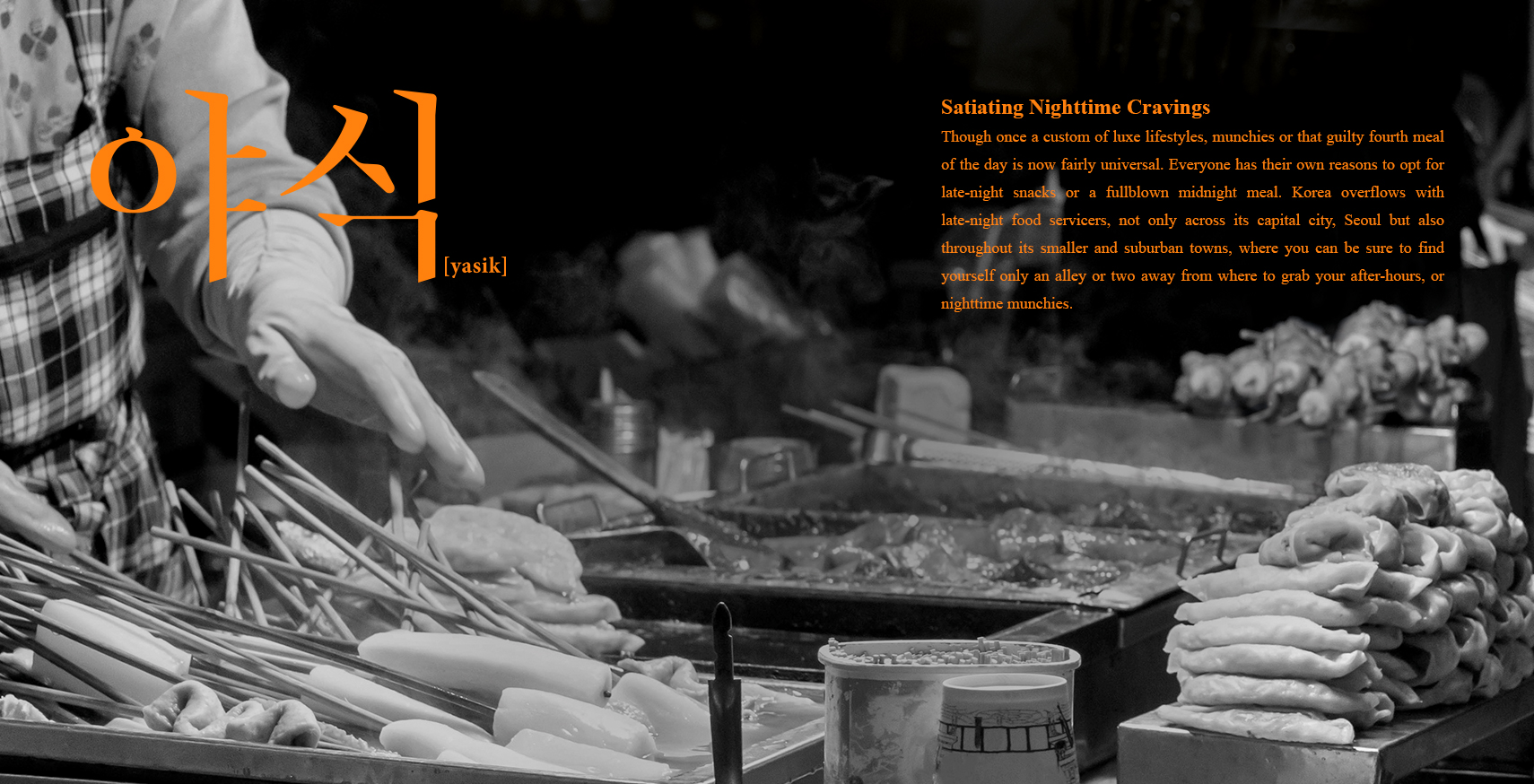 © shutterstock
© shutterstock
First-time visitors to Korea will quickly recognize that there is no shortage of places to go for a bite to eat. Considering Koreans’ tendency to dine and drink outside the home, it is perhaps not surprising that Korea has one of the highest number of restaurants in proportion to the size of the population in the world. Unlike most other places in the world and their restaurants, Korean eateries rarely call it a day at around 9 or 10 p.m. Korea overflows with late-night food servicers, not only across its capital city, Seoul but also throughout its smaller and suburban towns, where you can be sure to find yourself only an alley or two away from where to grab your after-hours, or nighttime munchies.
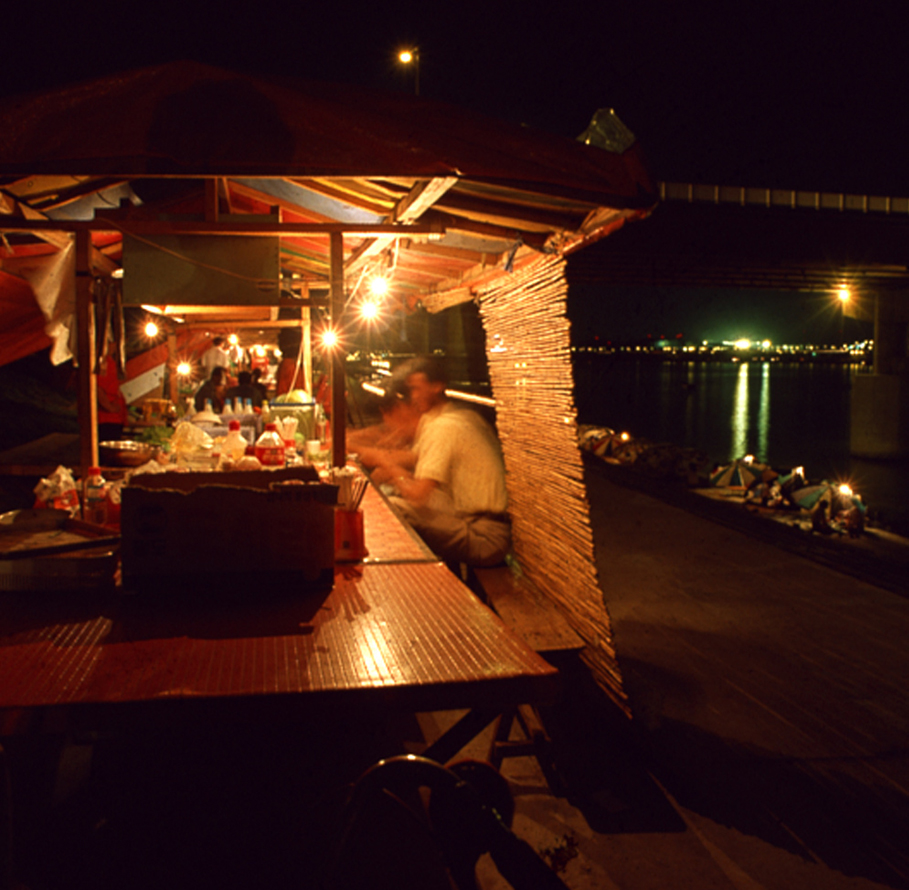 © YonhapNews
© YonhapNews
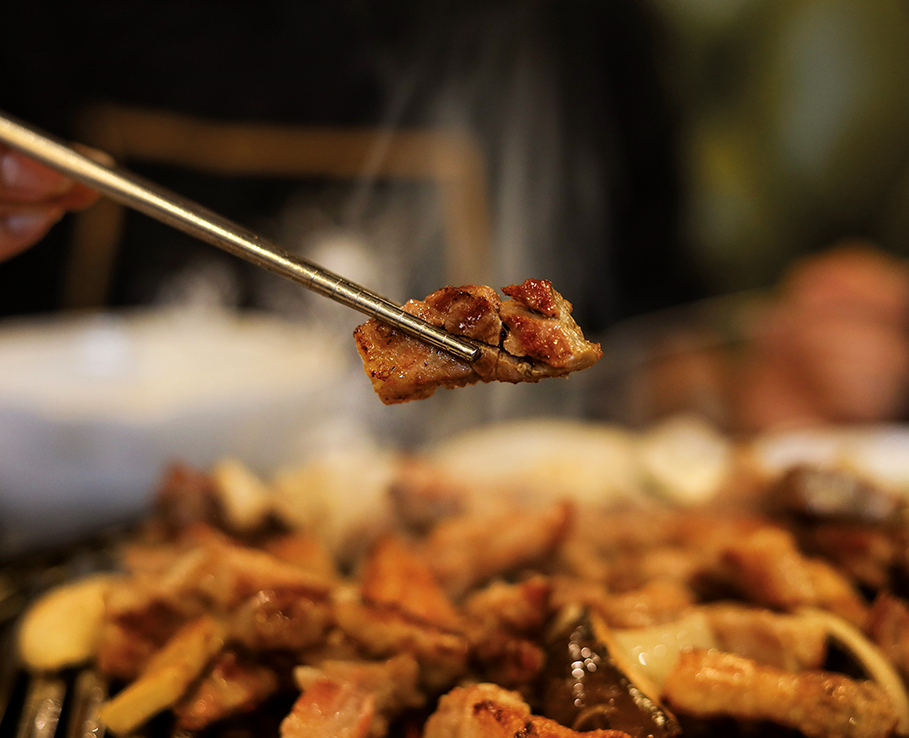 © shutterstock
© shutterstock
Time traveling back several decades, upon gaining initial popularity in the bustling environs of Cheonggyecheon Stream in post-war Seoul in the late 1950s, street-side food vendors sold eomuk (fried fish cake), hobbang (steamed buns filled with meat or vegetables), and jjinbbang (steamed buns stuffed with red beans), cheap yet filling food amidst post-war poverty.
The mobile (often wheeled) food stalls gave way eventually to larger food tents constructed of orange vinyl tarp known locally as a pojangmacha or “covered wagon.” Today, these tents, which in their heyday appeared in alleys and on roadsides after dark throughout Korea, continue to dwindle in number due to government efforts to get rid of such food businesses operating without the proper licenses. Despite the perception by some that they are eyesores, pojangmacha have not yet completely gone obsolete. In addition to being a large part of mainstream culture (as recent TV shows like TVN’s “Mystic Pop-up Bar (Ssang-gap Pocha)” and other drinking scenes of many films), pojangmachas are the classic go-to at the near-end of a night of numerous drinking rounds.
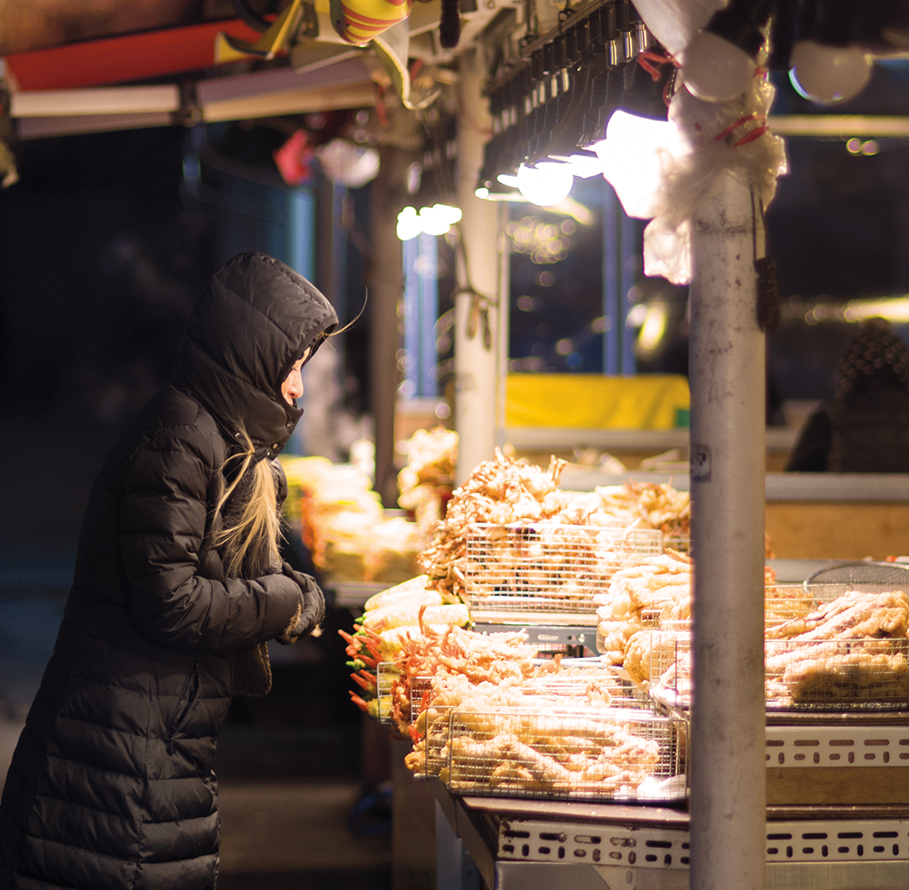 © shutterstock
© shutterstock
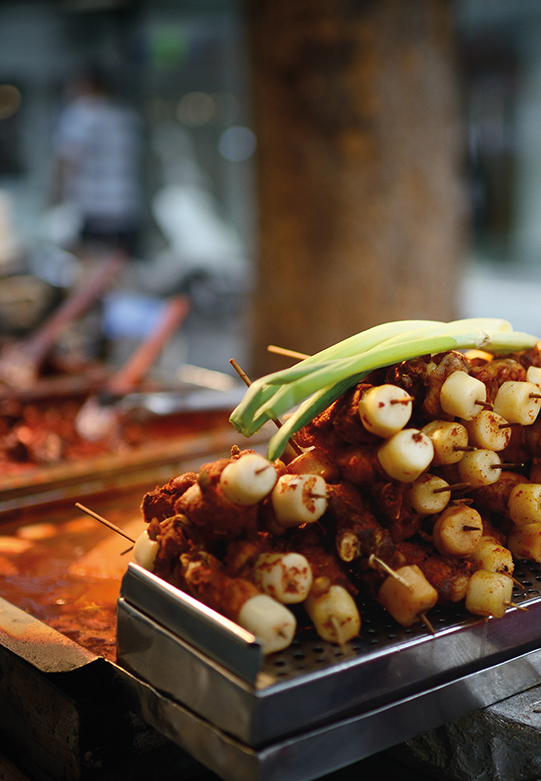 © GettyImages
© GettyImages
Notoriously enthusiastic drinkers, Koreans often opt for second rounds (e-cha), third rounds (sam-cha) and so forth. Such nights, whether between friends or colleagues, are so common that it is easy to spot restaurants (even serving heavy fare, like barbecue joints) operating 24 hours-long.
Typical pojangmacha fare, which accompanied bottles (and more bottles) of soju or beer, includes various anju (side dishes eaten with alcoholic drinks) like eomuk (fish cake), dakkochi (chicken skewers), dakbal (chicken feet), and steamed mussels in broth. Customers sit on stackable red plastic stools around foldable tables, all of which can be easily packed into the back of a blue bongocha (Korea’s ubiquitous blue pickup truck) when the last customers finally leave in the wee hours of the morning.
During the colder months, heat would be provided by small oil heaters placed among the tables within the tent, thus adding to the charm of these transitory late-night food spots. Although the pandemic has made at least for the time being, the sight of densely packed tables obsolete, nightscapes still shimmer with the clink of glasses and bidding of ‘cheers’ (jjan).
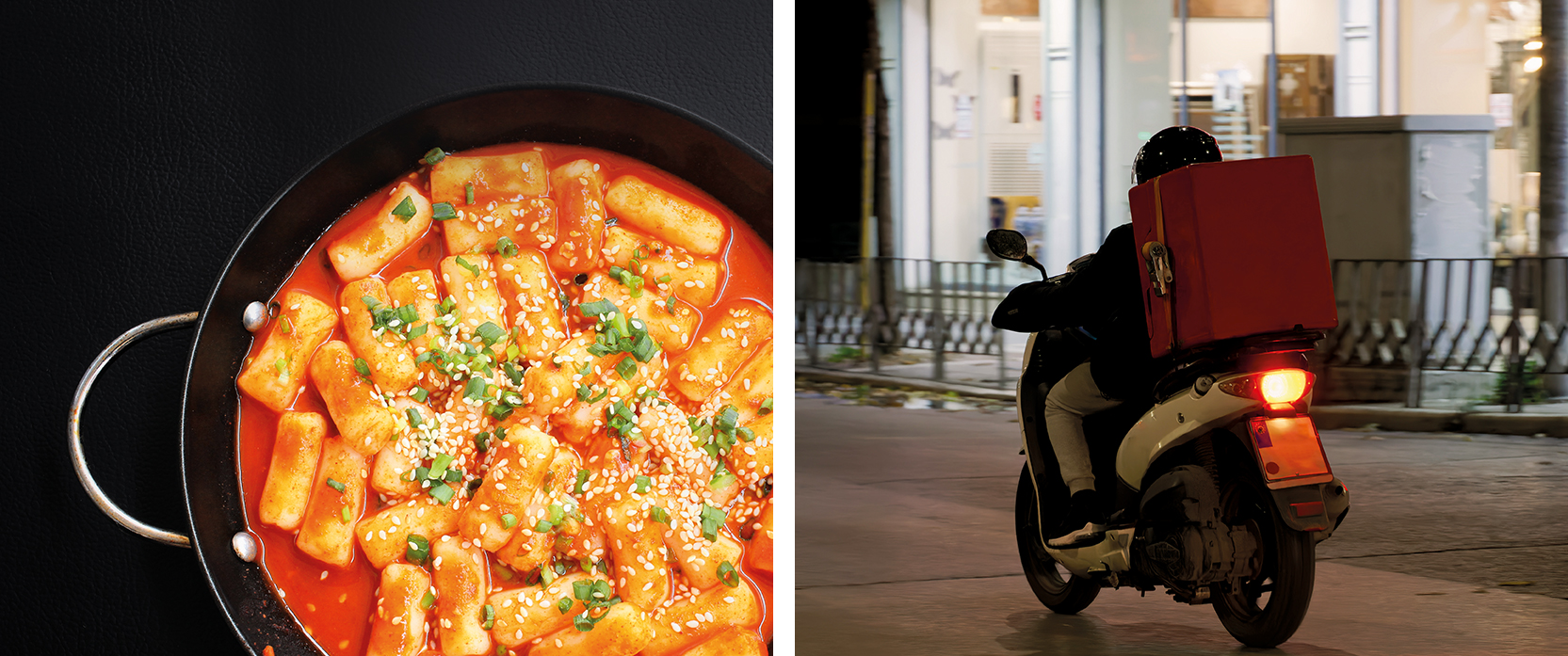 Tteokbokki (Left) © shutterstock, Delivery services are prevalent throughout Korea.(Right) © shutterstock
Tteokbokki (Left) © shutterstock, Delivery services are prevalent throughout Korea.(Right) © shutterstock
Tteokbokki (Left) © shutterstock, Delivery services are prevalent throughout Korea.(Right) © shutterstock
In addition to pojangmachas which are like stalls enclosed by nature, outdoor markets which operate late into the night remain popular. Generally located in areas where there are many companies or around universities where they appeal to young students, night markets, or yasijang, offer no shortage of quick bites late into the night. While offerings on hand can differ from market to market, defaults like sundae (blood sausage), fried or steamed mandu (dumplings), or what has become Korea’s most popular street food, tteokbokki (rice cake boiled in spicy red pepper sauce), all of can be enjoyed at nearly any yasijang in Korea.
Perhaps Seoul’s most famous (and largest) market serving munchies and meals until late into the night (with many of its stalls operating till 11 p.m.), Gwangjang Market is especially renowned for bindaeddeok (mung bean pancakes) and yukhoe (marinated raw beef). Though it does operate in daytime as well, taking in these markets at night when the stalls are alight and buzzing with hungry customers is highly recommendable.
Open until 10 p.m., Jagalchi Market in Korea’s second city, Busan, is a seafood market which offers visitors both familiar and exotic flavors from the sea. Crab and grilled eel are among the standard fare, while more adventurous eaters are recommended to try sannakji, a dish of freshly killed octopus which continues to wriggle away on the plate as diners try their best to grab a piece with metal chopsticks. Gaebul (spoon worm) is another Jagalchi Market late night treat, which can be considered an acquired taste. As with sannakji, gaebul is also enjoyed with a drizzling of fragrant sesame oil.
Colleagues sit around to enjoy
delivered food together.
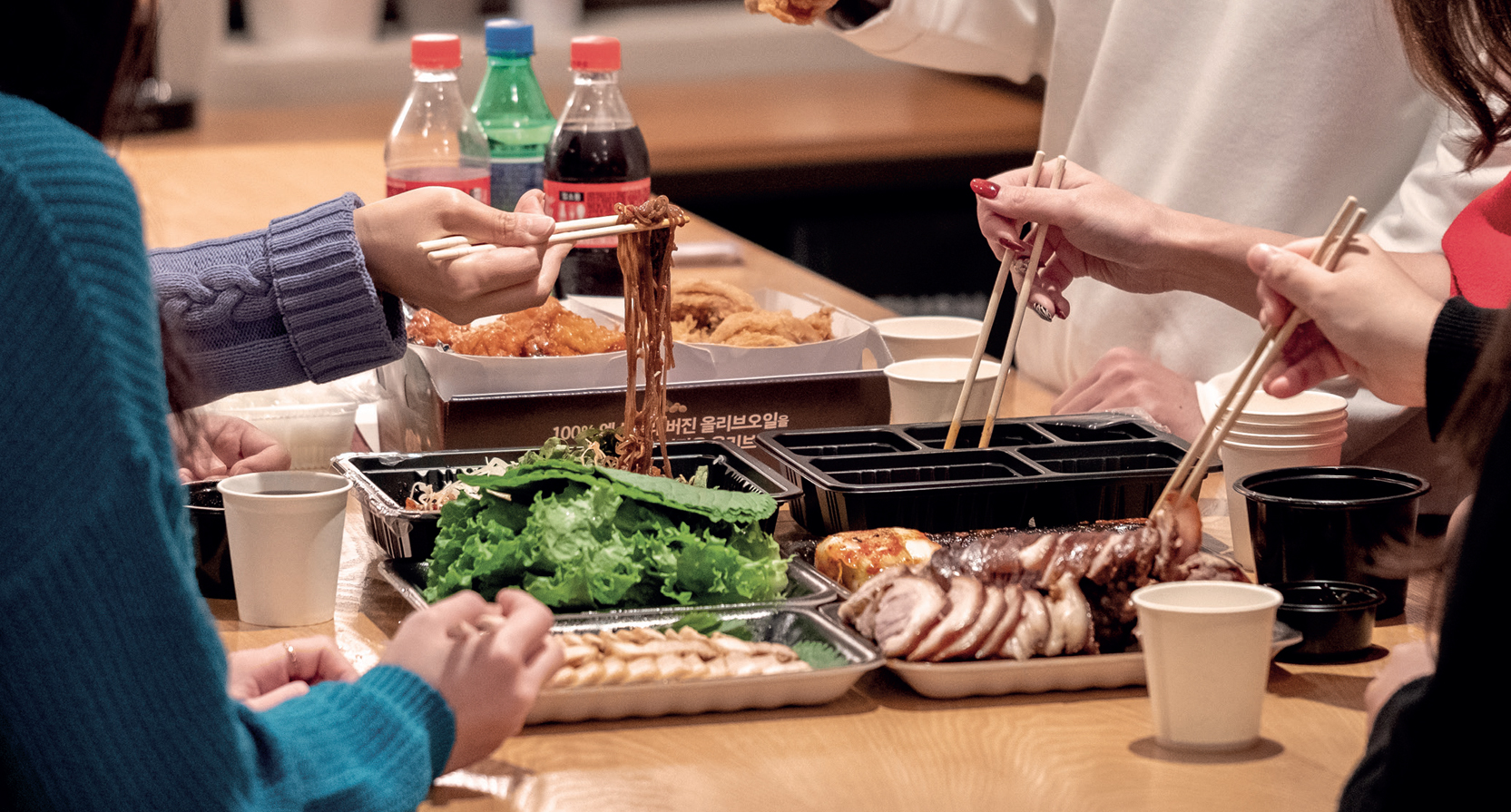 Jokbal and fried chicken are beloved menus amongst Koreans, especially the youth.
Jokbal and fried chicken are beloved menus amongst Koreans, especially the youth.
Jokbal and fried chicken are beloved amongst Koreans, especially the youth. © Lee Yongguk
As of the time of writing, government restrictions related to the Covid-19 pandemic have put a temporary end to eating and drinking out after 9 p.m. across Korea. For the time being, curing a case of the late-night munchies is only possible via delivery.
Korea today is known as a food delivery paradise. Meanwhile, the first recorded example of food being delivered in the country dates back to 1768 (it was naengmyeon, or cold buckwheat noodles). Between 9 p.m. and midnight, fried chicken remains the most popular late-night food choice among users of food delivery apps, accounting for more than one-third of all food delivery orders. What food comes second? It’s either jokbal (braised pig feet) or bossam (boiled pork)!
Time will tell when it will once again be possible to enjoy a meal or just a bite to eat outside late at night. Until that moment comes, however, we can be rest assured that Korea has no shortage of places to go to get a good night’s eat.